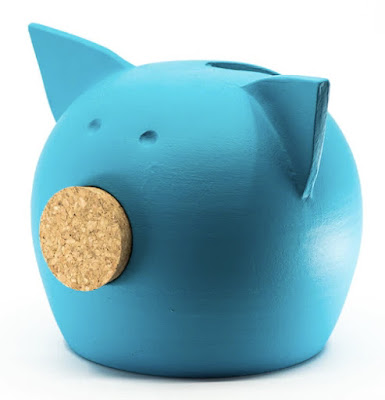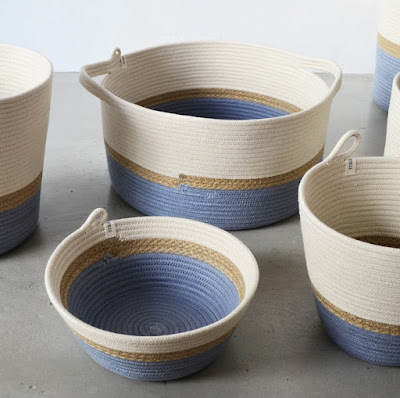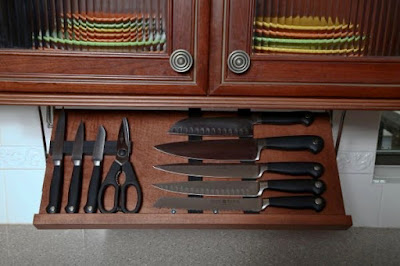
A friend was recently asking around for knife block recommendations, which made me realize I hadn’t written about knife storage since 2016. When I did some searching, I was delighted to find
many products that are new to me — so many that they wouldn’t fit into a single post. So let’s start out with just the countertop knife blocks.
When you hear the words “knife block” you probably think of those big chunky wood things with a bunch of slots. And of course you can still find plenty of those — but you have many other options, too.

For example, look at these lovely knife blocks from
Arbol Cuisine, sold on the company website or via
Etsy. They’re available in three different woods, and maker Stéphane Dumont says that “a small magnet inserted between each slot ensures that each knife stays in place.” He’s based in Quebec, and he uses woods which are indigenous to North America: maple, cherry and black walnut.

Magnets play a part in many modern knife blocks. This one from
Arte Legno doesn’t even have slots; the magnets keep the knives in place. I first found it at
Milk Street, although other sites sell it, too. And you can also get it in a
larger size. Milk Street says that the magnets “firmly hold blades in place without making them difficult to remove” — and also says that Arte Legno uses sustainably sourced wood.
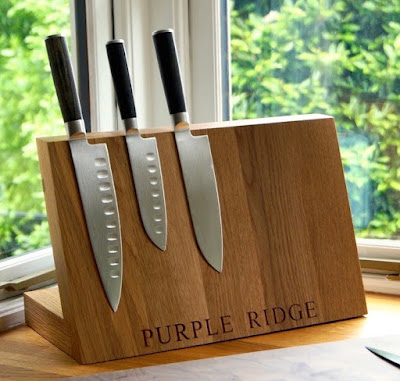
Here’s another magnetic style you’ll see quite frequently; I think this personalized oak one from
Make Me Something Special in the UK is one of the loveliest I’ve found. It’s available in three sizes.
With an old-style knife block you might have had to remember which slot held which knife; with this type of product there’s no such issue. But if you have knives that you don’t think look nice on display, even though they work well, this would not be the product for you.

The
knife blocks from Schmidt Brothers, with an acrylic safety cover, seem to be very popular at the moment; you can find them at
Sur la Table,
Williams Sonoma, and
Crate and Barrel.

And here's yet another magnetic design: The
360 knife block and the 360 Max, from
Design Trifecta.

Not all univeral knife blacks — the ones without slots — are magnetic. I’ve written about the ones from
Kapoosh before, but they are worth a re-mention.

At first glance, the Dice knife block from Kapoosh may look like an old-fashioned knife block. But it has no slots; instead, it’s filled with food-grade plastic “flex rods” which allow you to insert any knife anywhere. The rods can be removed and washed in a dishwasher’s top rack.

Like the idea of the Kapoosh, but not the look? Williams Sonoma has taken a Kapoosh insert and surrounded it with various holders. There’s
copper,
walnut,
marble and more.

An alternative to using plastic rods is to use bamboo or other wood skewers; the
Mikoto knife block from Ekoba (which is no longer available) used this approach. Now the only one I’m finding is this lovely
knife block from Lirio, made to order.
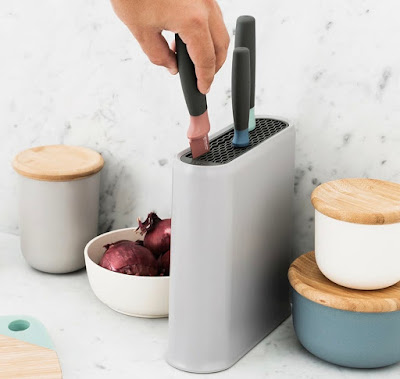

The
Leo knife block from
Berghoff provides yet another universal approach, with a removable insert (gray on one side, pink of the other) which holds 6-8 knives. There’s no wood here; this is all polypropylene and rubber, so it’s less stunning but also less expensive. Berghoff says it has an anti-slip base.

One final style I want to mention are those knife blocks that store the knives horizontally.
Fine Crafts of Kentucky makes these in three sizes, and it seems they would be great for those who want to put a knife rack under some low-hanging kitchen cabinets. I’m not sure I like the look of having the knife blades stick out the back, but the shop notes this lets them dry in the air and ensures you know which knife is in which slot.

And these blocks will be sold be
Viva Terra starting in August, if all goes according to plan.
In Real Simple, Jeffrey Elliot (the executive chef for knife manufacturer Zwilling J. A. Henckel USA at the time the article was published) explains why he recommends this style of knife block over those with slots holding the knives vertically: “The slots should be horizontal so the knives slide in parallel to the counter rather than resting on the blade edges, which can dull over time.”
 Sixteeen years ago today, my mom died of pancreatic cancer. Her favorite color was blue, so this has become my annual tribute to her. Since I'm retired I've not been updating this blog, but I couldn't skip this annual tribute.
Sixteeen years ago today, my mom died of pancreatic cancer. Her favorite color was blue, so this has become my annual tribute to her. Since I'm retired I've not been updating this blog, but I couldn't skip this annual tribute.
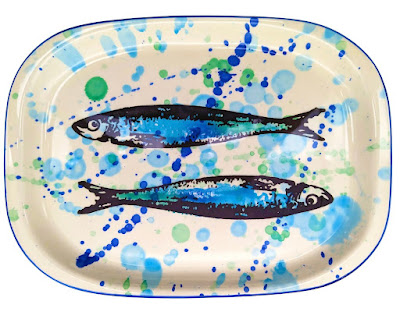 Moving from the sedate to the not-at-all-sedate, here's a serving platter/tray from Portugal, with two sardines rather than two birds. It comes in one other size, too.
Moving from the sedate to the not-at-all-sedate, here's a serving platter/tray from Portugal, with two sardines rather than two birds. It comes in one other size, too.
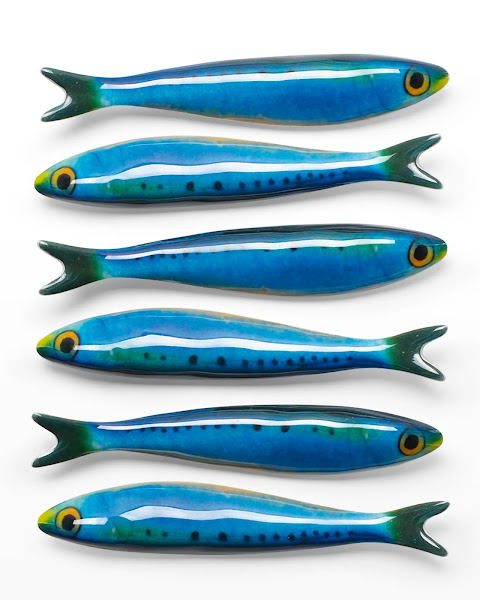 Staying on the fish theme, here are some very cool (and very expensive) fish magnets from Italy.
Staying on the fish theme, here are some very cool (and very expensive) fish magnets from Italy.
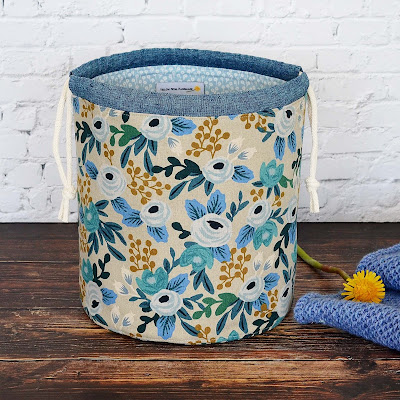 This canvas bucket comes from Yellow Petal Handmade, which provides "beautiful storage options for all of your knitting and crochet needs." It's made by Rifle Paper Co.
This canvas bucket comes from Yellow Petal Handmade, which provides "beautiful storage options for all of your knitting and crochet needs." It's made by Rifle Paper Co.
 And speaking of Rifle Paper Co, here's a recipe tin in a similar pattern.
And speaking of Rifle Paper Co, here's a recipe tin in a similar pattern.
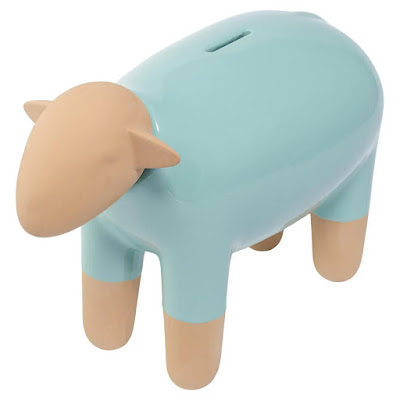 And finally, here's an expensive but adorable moneybox from Italy. The head is on a cork and can be removed to get the money out.
And finally, here's an expensive but adorable moneybox from Italy. The head is on a cork and can be removed to get the money out.
